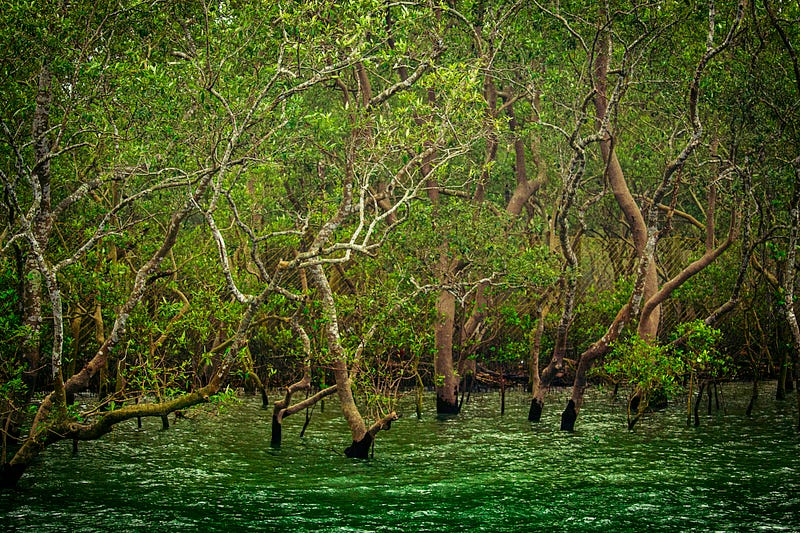# The Incredible Adaptations of Mangroves for Survival
Written on
Chapter 1: Introduction to Mangrove Resilience
Mangroves are fascinating plants that thrive in environments where few others can survive. My own home is filled with cacti and succulents that flourish in arid desert conditions, relying on minimal water and harsh sunlight. This fascination with plant adaptations drew me to mangroves, which are woody trees or shrubs uniquely suited to warm coastal ecosystems, where their roots are often submerged by tidal waters. This is a stark contrast to the dry habitats of cacti, yet both face formidable challenges.
In their coastal homes, mangroves endure conditions that would destroy typical houseplants. The saline water presents a significant challenge, but how do these trees manage to flourish in such seemingly inhospitable environments?
Section 1.1: Root Adaptations for Oxygen Intake
The key lies in their roots. Like all trees, mangroves require oxygen to generate energy through cellular respiration. They have evolved specialized root systems that facilitate oxygen absorption even when submerged. These roots feature small openings known as lenticels, which are essential for gas exchange. For lenticels to effectively absorb oxygen, they must remain above water, prompting mangroves to adopt various strategies.
Some species develop roots that rise from the ground and extend above the water's surface, functioning like snorkels. Other species have roots that arch above the soil and then dip back down, creating a series of “knees” that rise above the water for oxygen intake. Additionally, some mangrove varieties boast roots that elevate the tree above the water like stilts, ensuring constant access to oxygen. These adaptations enable mangroves to thrive where few other plants can.

Section 1.2: Strategies for Salt Management
In addition to absorbing oxygen, mangroves must also manage salt intake. They employ two primary strategies to achieve this. First, these trees create a barrier that effectively blocks over 90% of the salt present in the water from entering their vascular systems. Alternatively, they can allow salt to penetrate the plant but have developed specialized pores to excrete it before it causes harm. This process often results in beautiful salt crystals forming on their leaves.
Chapter 2: Ecosystem Benefits of Mangroves
In overcoming the challenges posed by salty waters, mangroves have established vital ecosystems that provide refuge for a diverse array of wildlife. From bats and sawfish to fiddler crabs, lemon sharks, and tigers, mangroves create habitats where countless species can thrive.
Moreover, these trees play a crucial role in protecting human communities. Mangrove forests absorb excess water during hurricanes and typhoons, safeguarding coastal cities from flooding. They also prevent shoreline erosion and sequester substantial amounts of atmospheric carbon, which they store beneath the seafloor, making it less likely to be released back into the environment.
In summary, mangroves have not only conquered an uninhabitable environment but also fostered ecosystems that provide significant benefits to both wildlife and humans alike.